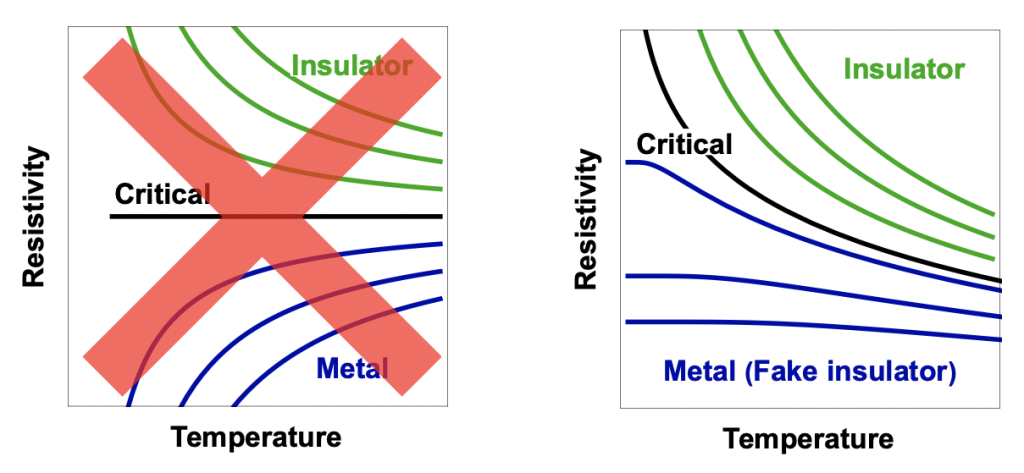
While the difference between insulators and metals is strictly speaking only defined at zero temperature, it has become commonplace to identify systems with a negative temperature-derivative of the resistivity (dR/dT < 0) as insulators. This is, however, misleading. In particular, sufficiently close to a metal-insulator transition a system can have dR/dT < 0 yet reach a finite zero-temperature resistivity, meaning it is actually a metal. Such ‘fake insulators’ can obscure the interpretation of Mott- and band metal-insulator transitions.
In a recent presentation at the workshop “New Spin on Molecular Quantum Materials” held by SPICE in Mainz (Germany), I discussed this phenomenon of ‘fake insulators’ in depth, and comparing it to recent experimental results in graphene and TMD bilayers. The presentation can be watched online:
You can also download the slides of this presentation (in pptx, 51 MB).